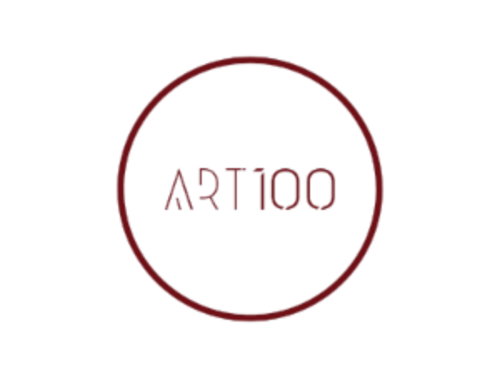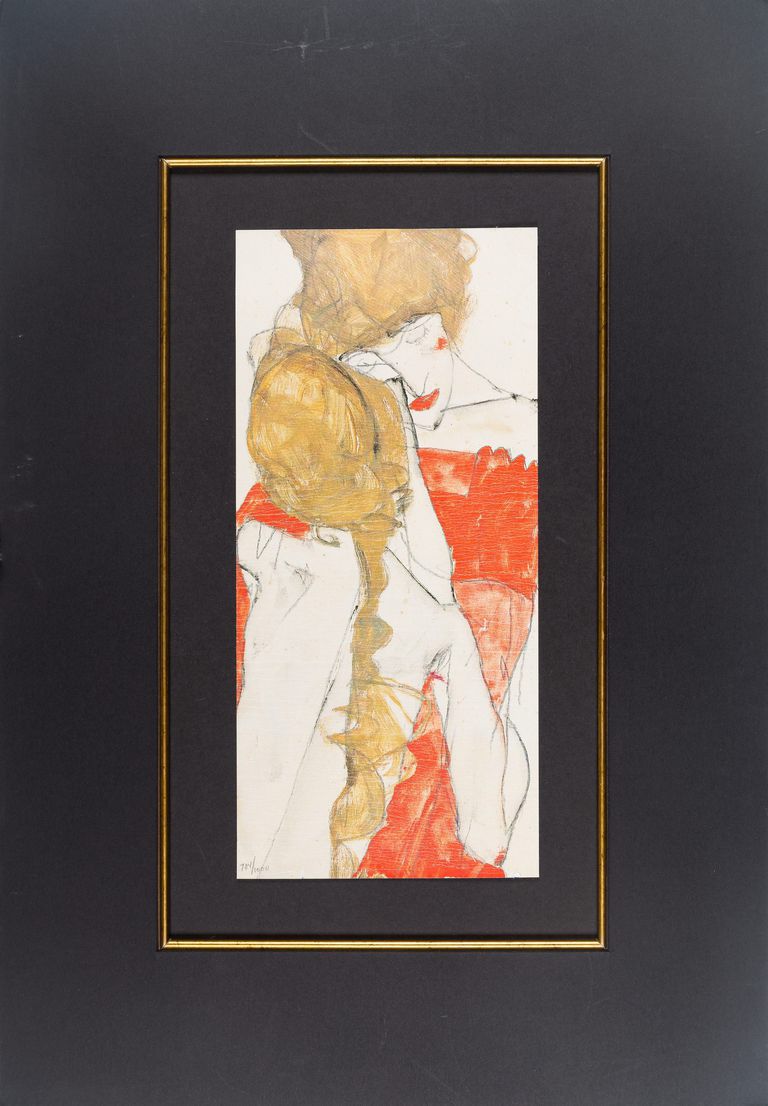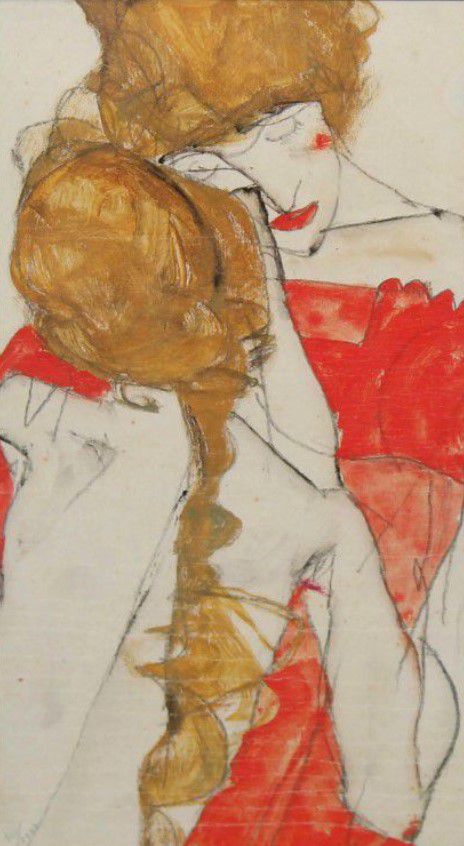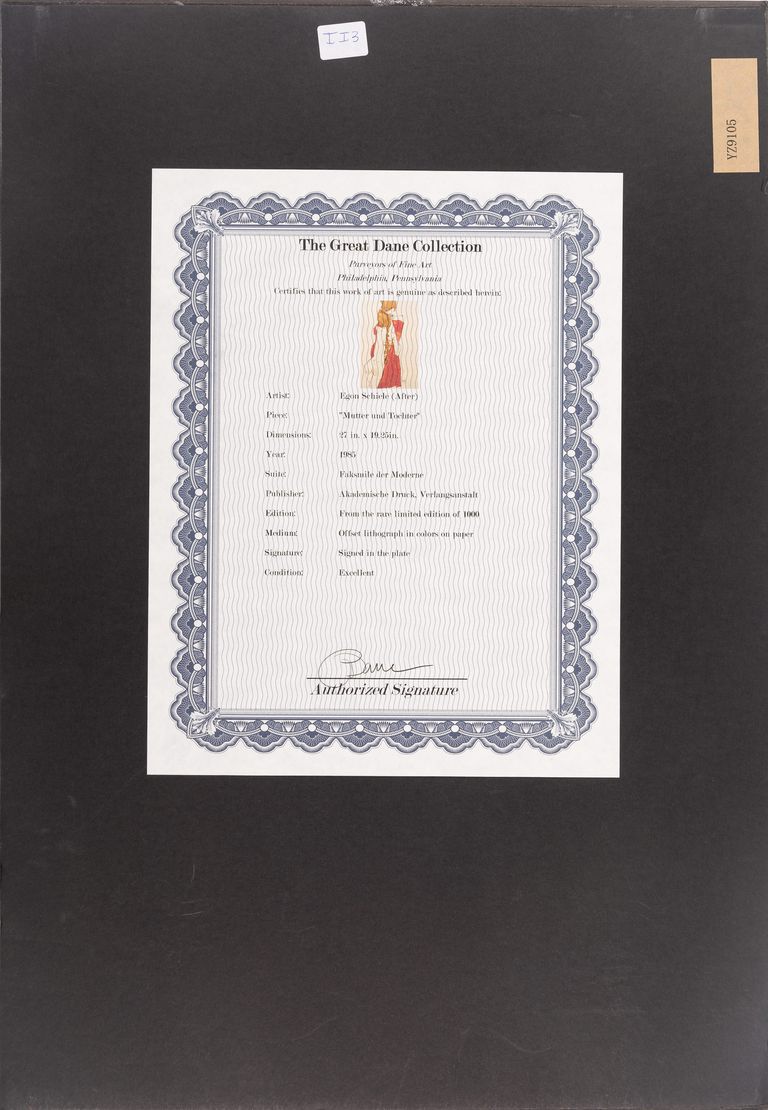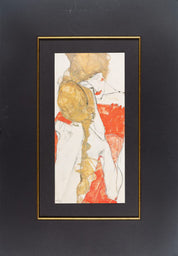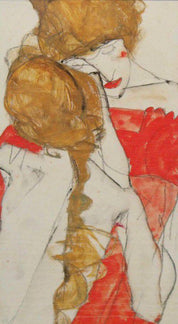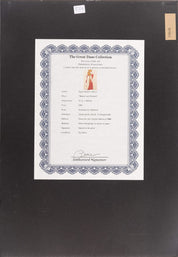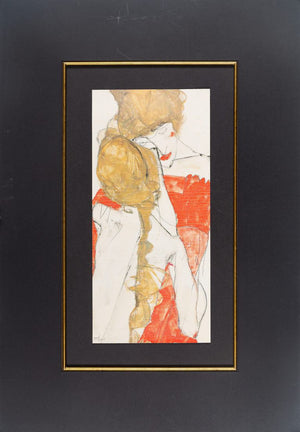Similar Items
Egon Schiele (After) - Mother and daughter
Egon Schiele
Artwork Details
Artist:
Egon Schiele
Dimensions:
27 x 19.25 in
Artwork Description
Artist: Egon Schiele (After)Title: Mutter und Tochter
Year: 1985
Dimensions: 27 in. by 19.25 in. (unframed)
Edition: From the Rare Limited Edition of 1000
Publisher: Akademische Druck Verlaganstalt
Medium: Offset Lithograph in Colors
Delve into the evocative artistry of Egon Schiele with "Mutter und Tochter," a captivating offset lithograph that echoes the soulful essence of the original work.
Measuring 27 inches by 19.25 inches (unframed), this piece transports you to a moment of intimate connection between a mother and daughter. Created after the original, this lithograph invites you to experience the emotional depth that defines Schiele's iconic style.
As part of the rare limited edition of 1000, this print stands as a testament to Schiele's enduring influence on the art world. Published by Akademische Druck Verlaganstalt, this lithograph embodies the legacy of Schiele's vision and emotional expression.
The use of offset lithography in colors adds vibrancy and depth to the piece, enhancing the nuances of Schiele's intricate composition. Each stroke and shade reflects Schiele's ability to convey emotion through his art.
"Mutter und Tochter" invites you to witness the power of human relationships through Schiele's discerning eyes. Elevate your collection with this exquisite lithograph that captures the essence of connection and vulnerability. Place your bid now to secure your connection to Schiele's legacy and the timeless world of emotional artistry.
Egon Schiele was born June 12, 1890, in Tulln, Austria. After attending school in Krems and Klosterneuburg, he enrolled in the Akademie der Bildenden Künste in Vienna in 1906. Here he studied painting and drawing but was frustrated by the school’s conservatism. In 1907, he met Gustav Klimt, who encouraged him and influenced his work. Schiele left the Akademie in 1909 and founded the Neukunstgruppe with other dissatisfied students. Upon Klimt’s invitation, Schiele exhibited at the 1909 Vienna Kunstschau, where he encountered the work of Edvard Munch, Jan Toroop, Vincent van Gogh, and others. On the occasion of the first exhibition of the Neukunstgruppe in 1909 at the Piska Salon, Vienna, Schiele met the art critic and writer Arthur Roessler, who befriended him and wrote admiringly of his work. In 1910, he began a long friendship with the collector Heinrich Benesch. By this time, Schiele had developed a personal expressionist portrait and landscape style and was receiving a number of portrait commissions from the Viennese intelligentsia.
Seeking isolation, Schiele left Vienna in 1911 to live in several small villages; he concentrated increasingly on self-portraits and allegories of life, death, and sex and produced erotic watercolors. In 1912, he was arrested for “immortality” and “seduction”; during his 24-day imprisonment, he executed a number of poignant watercolors and drawings. Schiele participated in various group exhibitions, including those of the Neukunstgruppe in Prague in 1910 and Budapest in 1912; the Sonderbund, Cologne, in 1912; and several Secession shows in Munich, beginning in 1911. In 1913, the Galerie Hans Goltz, Munich, mounted Schiele’s first solo show. A solo exhibition of his work took place in Paris in 1914. The following year, Schiele married Edith Harms and was drafted into the Austrian army. He painted prolifically and continued to exhibit during his military service. His solo show at the Vienna Secession of 1918 brought him critical acclaim and financial success. He died several months later in Vienna, at age 28, on October 31, 1918, a victim of influenza, which had claimed his wife three days earlier.
